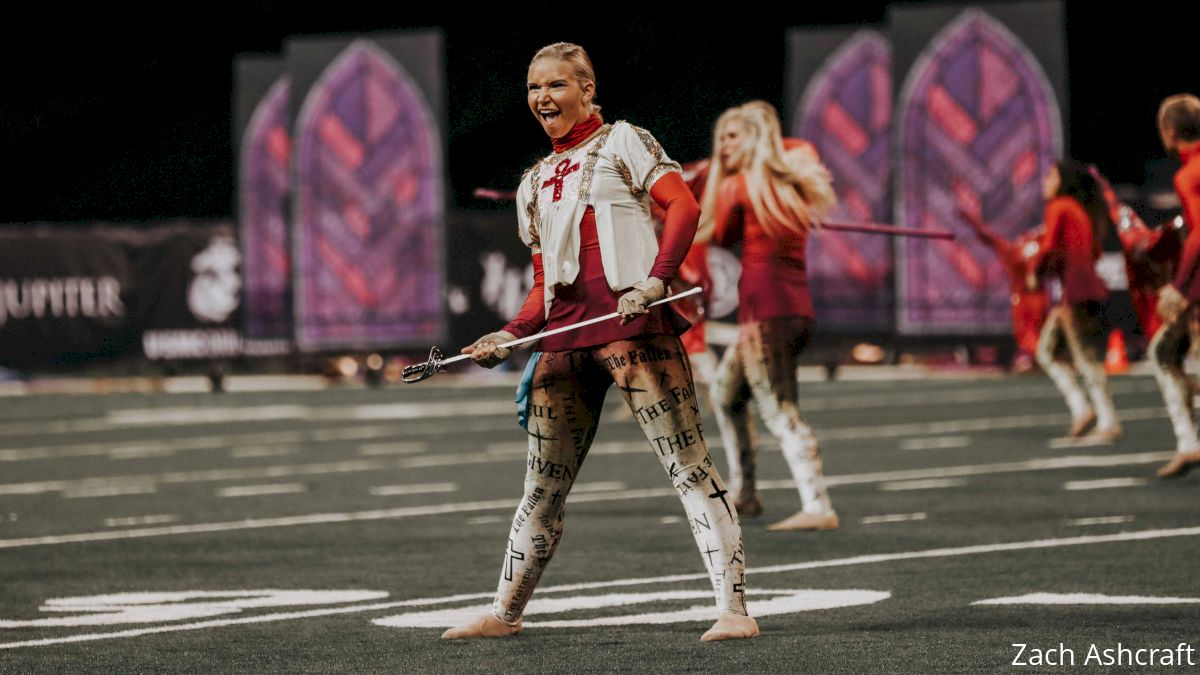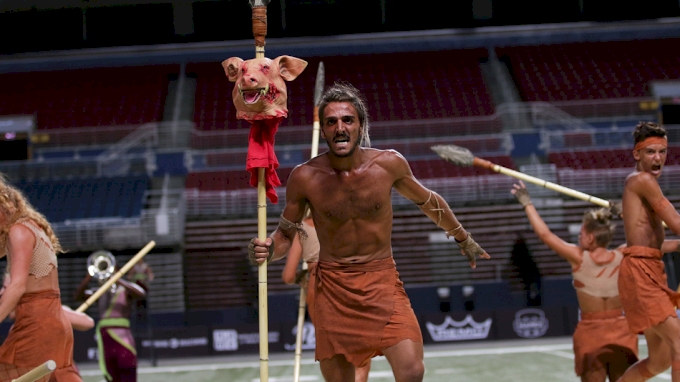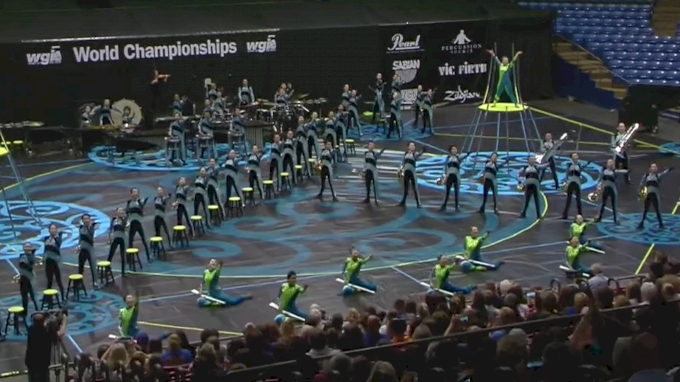Heather Graham: The Growth Of Color Guard In DCI
Heather Graham: The Growth Of Color Guard In DCI
Color guard icon Heather Graham shares her thoughts on the proliferation of color guard in DCI and discusses "why?"

Unlock this article, live events, and more with a subscription!
Already a subscriber? Log In
Heather Graham is the Director of Miamisburg HS color guard, Assistant Choreographer for the Boston Crusaders Color Guard, choreographer for the University of Cincinnati and many other incredible programs across the country. Heather was a performer of the Pride of Cincinnati winter guard and the Carolina Crown Drum and Bugle Corps.
No matter what section of a drum corps may be your own, it's hard not to find yourself appreciating the impact of rifles in synchronization, sabres being caught with ease one after another, or the bright flash of silks from a flag line.
The bold costumes, high tosses, and dynamic choreography bring the story being told by the musicians to life and punctuate each and every "statement" of the music.
Over the past decade, color guards have thrived in the spotlight of Drum Corps International. While you can still appreciate the iconic precision and simplistic style of guards of the past, each year has brought about new concepts in pursuit for continued development. That development includes but is not limited to: taking more exposed risks, capitalizing on proximity/integration, increasing production value, and finally, overall accessibility to education.

Get Tricky
In recent years, the marching arts have seen quite the increase in the color guard’s ability to control risky and challenging tricks/phrases in both movement and equipment manipulation.
The "oh's" and "ah's" rebound off stadium walls as full guards spin impressive sabre features, or integrate tricks that were once only capable of being done by one or two members.
From intricate catches to surprising releases— skill-packed dance features and tosses with multiple tricks underneath are seemingly coming from nowhere, partly due to the sheer number of members capable of executing them. These featured moments are typically highly exposed, at significant impacts in the music, and placed in tight proximity to other members to add to the thrill and difficulty to be awarded by the judges.
Because of the continuous evolution of what the performers are being asked to deliver on the field, instructors must find ever-changing versions of their own technique programs. While still building off of a regimented set of core basics, more and more groups are incorporating body with equipment in more nuanced phrases from their shows, offering the performer the time and repetition necessary to be able to feel comfortable and confident.
This allows a performer to maximize their consistency to deliver their highest level of both physical and artistic performance, on repeat.
WGI's Proliferation Across Sections
As our activity continues to see tremendous growth within all of WGI's divisions (color guard, drumline and winds) drum corps has simultaneously increased movement and performance training across all sections as well.
Because of this cross-over influence, full corps are now capable of being utilized with numerous different skillsets. This brings up opportunities like a full-corps dance feature that can quickly draw focus to a jaw-dropping rifle ripple, with lifts plus simultaneous body responsibilities being executed by both the musicians and color guard members.
As of recent, all performers must become more accessible and versatile for the designers to show off individuals as well as the ensemble building a positive feedback loop which heightens everyone's abilities. As drum and bugle corps continue becoming more integrated with skillsets and drill responsibilities, programs are profiting from the literal proximity and increased risk that sections can add to one another.
More performers from each caption being intertwined and committing to a huge payoff moment often become the extremely memorable, high-risk moments that are recognized by the audience and judges alike. This pushes groups to employ more and more of these moments within their show design from the get-go. Again, harkening back to the feedback loop.

Military → Theatrics
One of the biggest developments in DCI over the past few decades is pure production value.
In recent years, we have watched as props, uniforms and set designs became a part of the full-field narrative landscape. As each group enters the field, a completely new stage is set with elaborate graphics and now, a costume to boot.
As the complexity and overall cohesiveness of the activity continue upward, new things for the guard are brought in to interact with, creating new opportunities to do things that have never been done before with props or equipment.
Now, often these features for color guard members become the sole visual focus of major moments, highlighting some of the most impressive skills and phrases our artistic community has ever seen.
Nothing beats the feeling of hearing a gasp followed by applause from the audience, or the ability to “hear a pin drop” in a major emotional moment, knowing you have the audience in the palm of your hand, right where you want them.
It feeds the performer, builds camaraderie, and makes their physical/emotional contribution to the program worth that much more.
What's the point?
Look around and you'll see a new-found appreciation across all sections sweeping over the community as more content becomes available for us to connect to and more opportunities for us to connect to one another come up.
With the presence of social media, accessibility to educate through online video, as well as appreciate individual/ensemble creativity (and perhaps most importantly, diversity) in the competitive realm, past OR present, is more prevalent than ever. With more information at our fingertips, the desire to get up and try it for ourselves has brought about a new generation of unstoppable performers.
As our activity continues to enhance overall production value, we see more opportunities being provided for the performers that are willing to make the physical and emotional investment to bring these elaborate productions to life.
With a new generation of educators flourishing with the help of their mentors and colleagues, color guard in DCI is becoming a collaboration across all sections. Appreciating the maturity, technique, risk, and finesse from performers is paramount. The need to encourage each other to grow artistically and engage crowds as corps continue to push one another past new boundaries is integral.